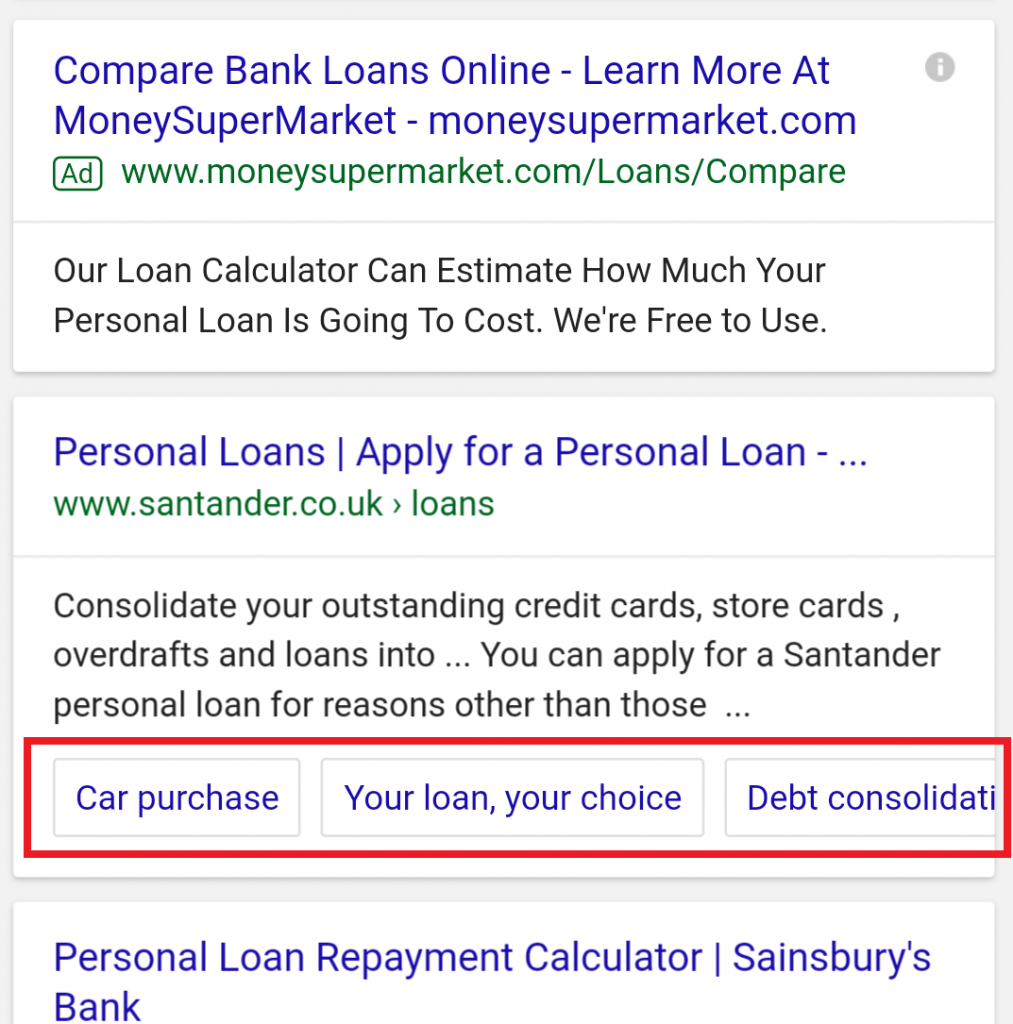Google Increases Site Links in Mobile PPC to 8 29 Aug 2017
Google has been busy updating the way pay per click advertising looks for mobile users to further improve the experience web users have with PPC. It was only a little while back that Google updated the site link extensions in PPC to accomodate more links, previously at a value between 2-6 links. This enabled the web user to use their finger to scroll through the different site links on offer to find the right site link for the web user to click onto.
The news that has become apparent, both from testing on Google and from Google’s own blog post, is that the number of site links that can be displayed as an ad extension for a mobile PPC advert can range up to 8 links.
Google’s own blog post about site link extensions now reads:
When your sitelink extension shows on a tablet or mobile device, it can show up to 8 links, which appear side-by-side on a single line in a carousel format. People can swipe left or right on the carousel to browse your various sitelinks.
As for desktop adverts, the number of site link ad extensions is still at 2-6.
This will not change the immediate look of a mobile PPC advert, as made apparent from the site links extension in the below mobile advert, that takes the same format as before the change.
 What this does mean, though, is that the web user has the ability to scroll through much more site links, up to 8, with the above example enabling the web user to scroll 7 site links.
What this does mean, though, is that the web user has the ability to scroll through much more site links, up to 8, with the above example enabling the web user to scroll 7 site links.
Analysis: Increasing the Mobile Site Links Limit
The increase in site links, at its core, is a way of allowing the web user to find a link that is most relevant to their needs. It appears 2-6 site links are not enough and it would be beneficial to adverts to have more site links for mobile PPC adverts.
However, having more site links does make the advert a bit more complex, and possibly cluttered with more content. Be this as this may, the site links increase should not have a negative impact to the web user’s experience with mobile PPC for one main reason: infinity scroll.
Infinity scroll is the term where the results automatically update as the web user scrolls, so the web user will never reach the bottom of the page but scroll for an infinite amount of time. For platforms such as Facebook and Twitter, this has proved very effective.
It appears that infinity scroll is something that has become ingrained into web users. If web users do not like something they see, they will simply scroll past it – it means the amount of content a web user can read/scan effectively increases.
2-6 links would not take advantage of the awareness web users have for infinity scroll. On the other hand, 8 links would capatilise on such a trait web users seem to have, allowing them to scan through more links to better find one that suit their needs the most.
Will Green
Will created Ask Will Online back in 2010 to help students revise and bloggers make money developing himself into an expert in PPC, blogging SEO, and online marketing. He now runs others websites such as Poem Analysis, Book Analysis, and Ocean Info. You can follow him @willGreeny.
|
Recommended posts
|

